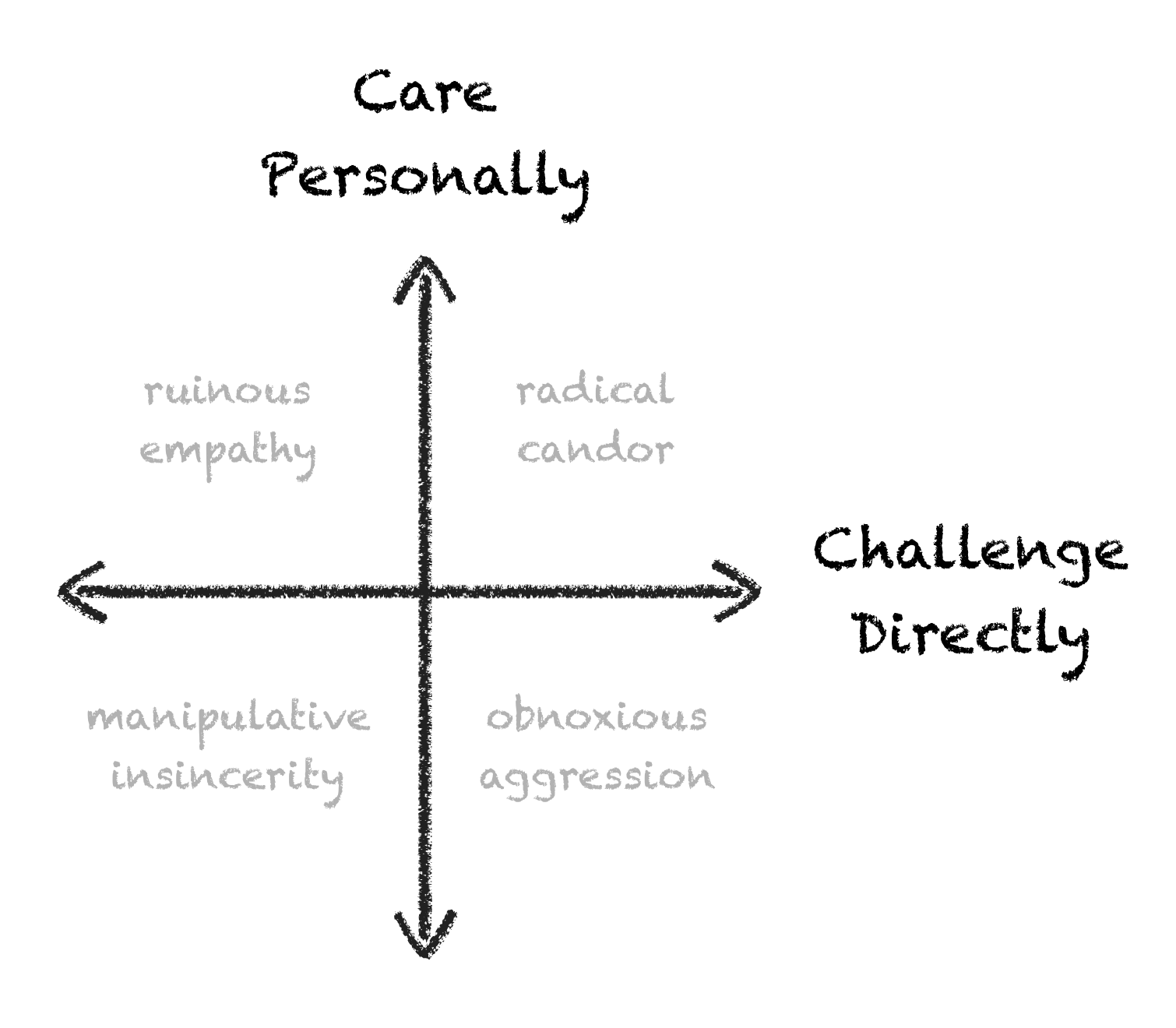Silicon Valley earned its name for the early chip-making business which staked early claims in orchard filled valleys. Companies such as Fairchild Semiconductor and later Intel and AMD were in the business of silicon, but they were also in the business of reinventing business introducing such concepts of stock options for employees and openly denying the hierarchical culture of the traditional corporation. “People remained faithful to each other, but not to the employer or the industry.”1
I’ve spent a good part of the past three decades at companies such as Borland, Netscape, Apple, Palantir, Pinterest and now Slack and all that time I’ve been watching. What is the secret sauce? What are the attributes of high growth start-ups that allow some to be wildly successful where others plateau, stagnate and die?
Here’s one common thread I’ve observed: healthy companies and teams efficiently communicate.
A Diverse Set of Eyeballs
I can’t stop highlighting Kim Scott’s recently published Radical Candor. I watched the original video several years back and was instantly infected with her simple (but complex) framework around both delivering and receiving feedback:
At the core of the concept of Radical Candor is the idea that the humans you work with and for are uniquely equipped to give you feedback. These are the humans that day in and day out are watching how you treat others, how many you make decisions, and how the results of those decisions play out.
Not only do these humans have a wealth of useful feedback, but they are also distinctly not you. They are each shaped by a different set of experiences that subtly shape their feedback with a healthy bias. Whether this bias increases or decreases the quality of the feedback is a moot point if they never effectively give it to you.
My rule: all ideas get better with a diverse set of eyeballs. Radical Candor preaches a clear and humane strategy for developing relationships with your circle of relevant humans so that everyone’s operating mode defaults to efficiently sharing feedback.
That’s the third time I’ve typed “efficiency.” When I reflect on teams that I consider efficient communicators, I measure in the following ways:
- How long does it take new (perhaps controversial) information to be introduced?
- How quickly do they adapt to new information? How fast do they error correct?
- How vigorous is the debate? How respectful?
The core mechanic in each of these communication interactions is feedback. It isn’t just data moving Human A to Human B; it’s the required amount of effort for Human A to build, convey, and deliver that data plus the required amount of effort for Human B to receive, digest, and act on the data. If you define effort as work plus time, the higher the total effort, the lower the efficiency.
Scott writes, “Defining [work] relationships is vital. They’re deeply personal, and they’re not like any other relationships in your life. But most of us are at a loss when we set about to build those relationships.”
Well defined work relationships define the teams I’ve admired in my career. They were not the nicest teams, they were not the most pleasant, but these were teams with deep trust in each other. They deeply heard each other. They weren’t worrying about personality conflicts or politics, they were listening for real treasure… the signal.
Silicon Sauce
Radical Candor is not just a framework for delivering feedback; it’s an entire management philosophy about building high-trust teams. While it covers the compounding strategic value of efficient feedback, the book also dives into developing growth plans for your team, creating a culture of open communication, techniques of avoiding boredom, and defining a results-focused team.
If you’re looking for the secret sauce of the Silicon Valley, I would argue that each chapter of Radical Candor captures a component of that sauce. If you are a leader of humans, aspire to lead humans, or just want to iterate on the craft of communication, grab a highlighter, and dive into Radical Candor.
- https://en.wikipedia.org/wiki/Traitorous_eight ↩

Michael,
Your review just made the four long years I spent writing the book worthwhile. Thank you!
Kim
Read your review, watched the video, bought the book.
Great stuff! Thank you for sharing when you find good things and for not sharing when they are not so good.
“Here’s one common thread I’ve observed: healthy companies and teams efficiently communicate.”
Wow, what a great post. So that is what Google is always talking about when they say “quality content”. LOL
No, but seriously I really appreciate the recommendation, explanation, and the way you wrote it. Very nice good sir.
I am definitely going to get the book. I can’t believe you even got the author to leave a comment.
I will return.